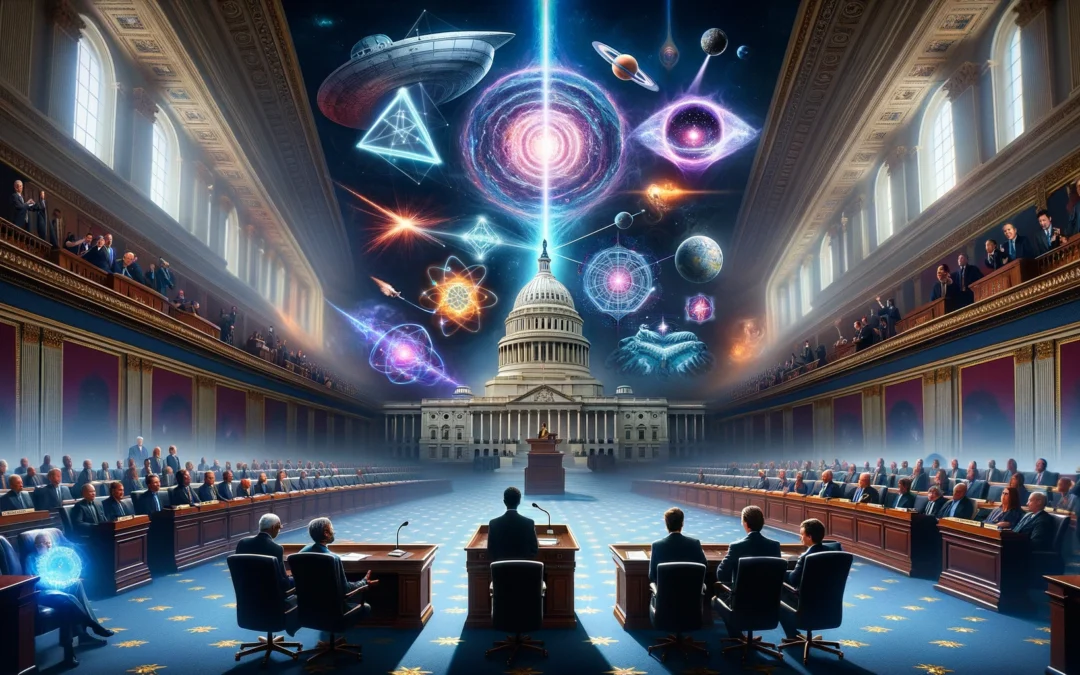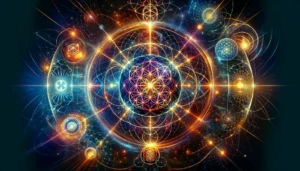In a groundbreaking session that marks a first for the U.S. Congress, whistleblower David Grush opened the door to a serious discussion on unidentified anomalous phenomena (UAPs), bringing forward the complex topic of interdimensional beings and the holographic principle. This principle, which emerges from the intersections of general relativity and quantum mechanics, suggests that our three-dimensional existence might merely be a projection from a higher-dimensional space—a concept as intriguing as it is challenging to comprehend.
The Holographic Principle and Its Implications
Dr. Avi Loeb, a professor of science at Harvard University and the author of “Extraterrestrial: The First Sign of Intelligent Life Beyond Earth,” was called upon to shed light on these assertions. Dr. Loeb’s expertise provided a grounding perspective, clarifying that while the holographic principle is a valuable theoretical framework within physics, its application to the technology behind UAPs or UFOs remains speculative and unsupported by empirical evidence. String theory, which posits the existence of additional spatial dimensions beyond the three known to us, has yet to be validated as a description of reality, leaving the holographic principle’s relevance to UAP technology in question.
The hearing navigated complex scientific territories, from the limits of contemporary physics to the potential for new physics that could explain the extraordinary capabilities observed in UAPs. However, Dr. Loeb emphasized the importance of empirical data and physical evidence over theoretical speculation. The discussion highlighted a critical divide between theoretical possibilities and the tangible, measurable phenomena associated with UAPs.
Unraveling Mysteries: The Need for Empirical Evidence
Despite the fascinating scientific discourse, the lack of concrete evidence and firsthand testimony regarding UAPs and their alleged technologies remains a significant hurdle. While Grush’s claims about the possession of alien technology by the U.S. government intrigue and provoke, they also underscore the necessity for transparency and the release of verifiable information. The promise of future disclosures, suggested by the willingness of Grush to provide contact information for individuals with firsthand knowledge, offers a glimmer of hope for those seeking clarity on these mysterious occurrences.
The seriousness of the Congressional hearing signals a shift in how UAPs are perceived at the highest levels of government, suggesting an openness to investigating and understanding phenomena that challenge our current scientific paradigms. This session not only illuminates the complexities of studying UAPs but also the imperative for a rigorous, evidence-based approach to unraveling these mysteries.
Dr. Loeb’s ongoing research, including his expedition to retrieve materials from an interstellar meteor, exemplifies the proactive scientific inquiry necessary to advance our understanding of the cosmos. As the academic community and government agencies grapple with these enigmatic phenomena, the pursuit of knowledge continues, guided by the principles of scientific rigor and an unwavering curiosity about the universe and our place within it.
This hearing marks a pivotal moment in the study of UAPs, bridging the gap between speculative theory and the quest for empirical truth. As we stand on the cusp of potentially transformative discoveries, the collective gaze of scientists, policymakers, and the public remains fixed on the heavens, awaiting the next chapter in our exploration of the unknown.









